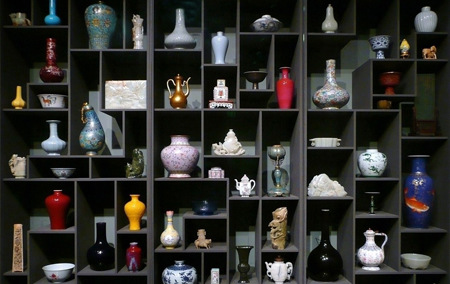(Ecns.cn) – The number of Chinese billionaires seeking artworks and collectibles in the West is increasing by 20 percent every year, the Southern Metropolis Weekly reported.
According to latest statistics released by international auction house Christie's, China is now the world leader in auction sales of collectibles. In 2010, 20 percent of its turnover (buyer commission not included) in global auction sales came from Chinese collectors, while the rate was only 16 percent in 2009 and 7 percent in 2005.
Chinese collectors also contribute a considerable amount of money to Sotheby's business every year; for example, more than half of the turnover of its Asian auction sales in 2009.
Thus many auction houses have started to put more energy into figuring out the Chinese collectors' tastes, and how to improve relations with these potential buyers.
'Peking Pound' effect
In 2010, the booming "Peking Pound" accounted for almost a third of the money spent during Christmas sales in the UK, but its far ranging effect also shocked the art collection market.
In February 2011, Duke's auction house announced the discovery of a Yongle period (1403-1424) blue and white "moon flask" vase that it estimated was worth as much as £1 million at its May sale. Even though authorities were split as to whether it is an early Ming vase or later, a telephone bidder bought it for £119,500, according to Bloomberg.
In June 2011, a 15-meter-long Song Dynasty (960-1279) scroll fetched £40.9 million at a small auction house operating out of a warehouse in Ruislip, a suburban area in England, though the scroll was originally estimated at just £1.2 million, reported The Telegraph.
The Hurun Wealth Report 2011 confirmed China had 960,000 individuals with personal wealth in excess of 10 million yuan ($1.58 million) in 2010, a 9.7 percent increase over the previous year. This new wealth is a main driver behind the Chinese global auction surge.
Frenzy in seeking collectibles overseas
Gong Jisui, professor with the China Central Academy of Fine Arts, said there are currently many Chinese who are investing in Western art collections; however, the top choices are still works of Chinese art including paintings, calligraphy and handicrafts.
Kong Chao, director of the Ceramic and Works of Art Department of Beijing Council International Auction Co Ltd, experienced the busiest time of the year at the 2011 Beijing Council Autumn Auction. Kong said he had to receive a visitor every few minutes during the autumn auction because it had attracted unprecedented attention.
Kong said that the majority of the potential clients are reselling overseas artworks, and the most frequently and closely watched objects are Chinese paintings and calligraphy works traced back from foreign countries.
When talking about finding art treasures in other countries, Kong said what impressed him most was the spirit of people from east China's Zhejiang Province. Many times, Kong met people from Zhejiang who could not speak a single English sentence and only understood Arabic numerals; however, they are among the most active groups at international auctions.
Market mess
However, some dishonest people have begun to take advantage of the trend and are disrupting the antique market.
In Japan, some crooked craftsmen make reproductions of ancient Chinese artworks and put the replicas in antique shops for sale. Because it isn't easy to find Japanese experts to authenticate Chinese artworks, many buyers are fooled and the objects gradually become "genuine" antiques after being circulated throughout the globe.
Because a considerable number of Chinese feel a duty to repatriate art works to their motherland, many such artworks also enter China without being detected as fakes.
The domestic antique market is also awash in phony antiques, according to Wu Shu, a famous Chinese writer, who is regarded as the "deep throat" of China's antique industry, He said that 95 percent of the antiques on the market today are modern reproductions, and that these fakes belong to 95 percent of the art investors, who have spent 95 percent of their money on them.


















